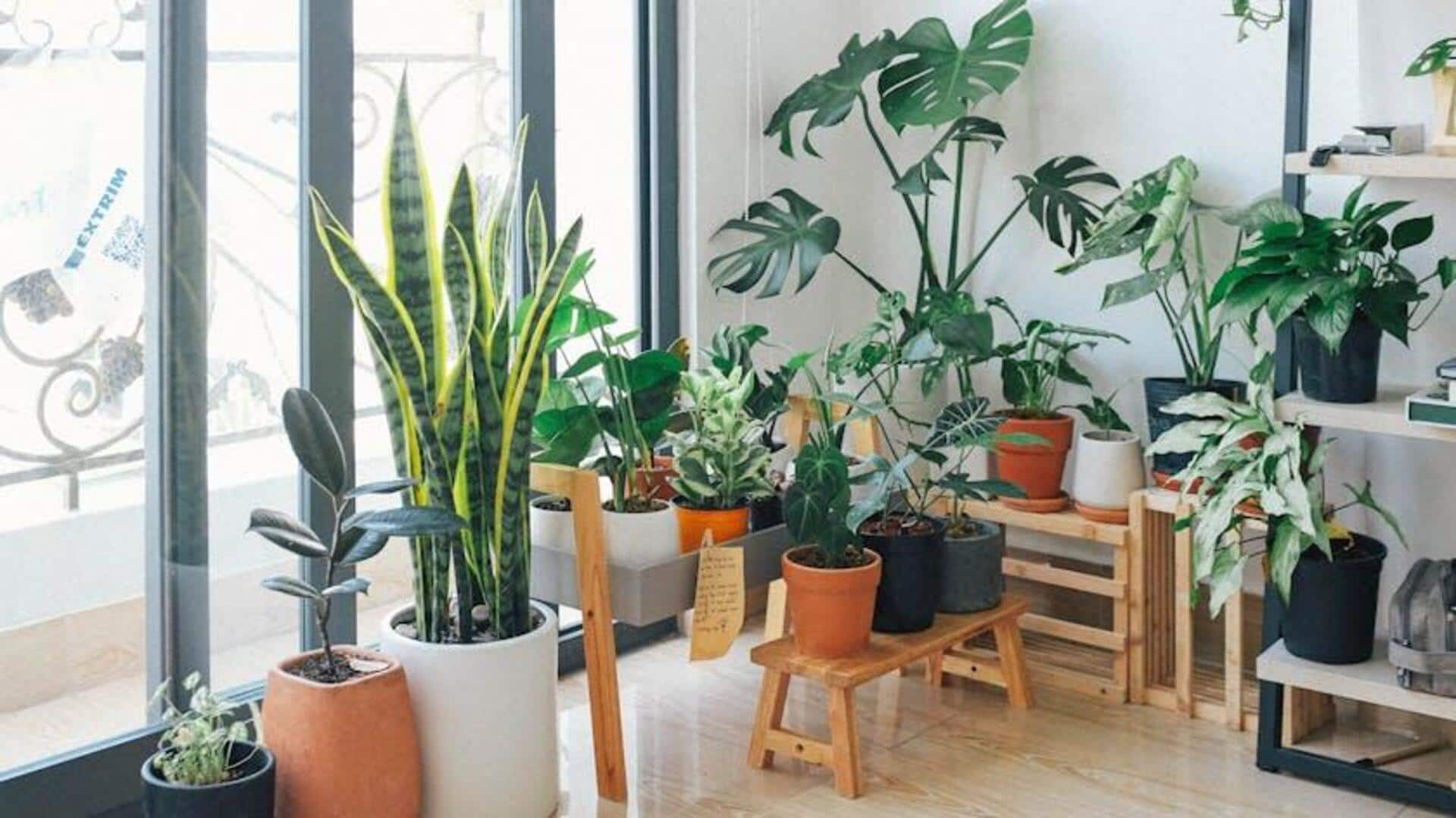
How to arrange indoor plants beautifully
What's the story
Arranging indoor plants can turn your living space into a lively and refreshing one. With the right placement and selection, plants not only beautify but also clean the air. Be it a few succulents or a whole indoor garden, knowing how to arrange them well can do wonders. Here are some handy tips to arrange your indoor plants like a pro.
Tip 1
Choose the right plants for each space
Picking the right plants for various parts of your home is important. Take into account the light, humidity, and temperature when selecting plants. For example, snake plants or pothos may thrive in low-light areas whereas bright places could be ideal for succulents or cacti. Aligning plant requirements with environmental conditions means they will grow healthily.
Tip 2
Utilize various heights and sizes
Creating visual interest is all about using plants of varying heights and sizes. Taller plants like fiddle leaf figs can be placed in corners or behind furniture to add depth. Smaller pots can be grouped on shelves or tables for a layered effect. Mixing different sizes helps create balance and prevents any single plant from dominating the space.
Tip 3
Incorporate different textures and colors
The diversity in texture and color can add that much-needed dimension to your plant arrangement. Pair leafy greens with spiky succulents or trailing vines for contrast. Also, keep foliage colors in mind; mix dark green leaves with variegated ones to make them visually appealing without overwhelming the senses.
Tip 4
Use creative containers and stands
The choice of containers is also key to the aesthetics of your plant arrangement. Choose pots that suit your interior design style—modern ceramic ones or rustic terracotta ones. You can also elevate certain plants with stands or hang them from ceilings to make the most of vertical space.
Tip 5
Regularly rotate your plants
Rotating your indoor plants from time to time promotes even growth by exposing all sides to sunlight equally over time. This keeps them from leaning towards light sources and ensures they look symmetrical. Regular rotation also gives you a chance to look at each plant closely for any signs of pests or diseases that require attention promptly.